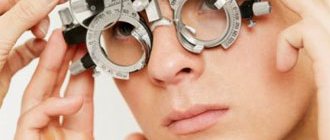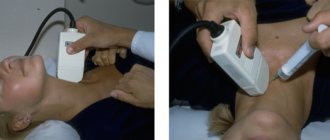Spasmophilia or infantile tetany occurs in young children between 3 and 24 months, with boys being more susceptible to the disease.
This pathological condition with increased neuromuscular excitability and the presence of clonic convulsive seizures is caused by a failure of mineral metabolism, namely calcium-phosphorus.
There are two forms of spasmophilia:
- hidden
- latent, especially noticeable by contraction of the muscles of the face, hand, and fleeting cessation of breathing during the period of application of external stimuli; - obvious
- manifest, very often arising from a latent form due to the minimum amount of vitamin D in the body, manifests itself as laryngospasm, carpopedal spasm and eclampsia.
This disease is directly related to rickets, as evidenced by the presence of hypocalcemia and hyperphosphatemia.
General description of the disease
The onset of the disease occurs at the same age as rickets, since these two diseases are etiologically and pathologically interrelated. The calciopenic state of tetany is accompanied by spasticity of the muscles of the face, larynx, and limbs.
In the modern world, 3.5–4% of children with obvious signs of rickets are susceptible to infantile tetany. Such a small percentage suggests that the number of severe cases of rickets has decreased.
In the case of an obvious form of spasmophilia, medical staff and parents must be fully prepared to assist the child in restoring vital functions.
The thetanoid state over a long period of time leads to disruption of the central nervous system, delayed mental development, and occasionally to death.
What triggers the development of the disorder?
Due to a failure of calcium-phosphorus metabolism, a drop in the saturation of total and ionized calcium in the blood occurs, combined with alkalosis and hyperphosphatemia.
An increase in the amount of inorganic phosphorus is preceded by:
- feeding the baby with cow's milk, when excess phosphorus is partially excreted;
- overdose when taking vitamin D2 and D3 due to self-medication or due to uncontrolled prescription by a pediatrician;
- absorption of a large percentage of exposed skin from ultraviolet rays in the spring.
As a result of high levels of vitamin D metabolite:
- the quality of work of the parathyroid glands decreases;
- there is a change in the alkaline reserve of the blood, in advanced cases alkalosis occurs;
- the absorption of calcium and phosphorus in the intestine is stimulated or microelements are excreted in the urine in increased quantities, reabsorption of amino acids begins in the renal tubules;
- The baby’s bone tissue accumulates calcium above the limit, which is why its level in the blood decreases, and the amount of potassium increases, which leads to hyperkalemia.
Also, the causes of ultra-high muscular-nervous activity and convulsive readiness can be a decrease in the blood level of:
- magnesium;
- sodium;
- chlorides;
- vitamins B1 and B6.
In this case, any unfavorable factor - fear, screaming, crying, a viral disease, vomiting, a jump in temperature can provoke a convulsive attack.
Children who feed on mother's milk almost never suffer from spasmophilia; the risk group is artificial babies and premature babies.
Rickets
In some cases, differential diagnosis with rickets-like diseases (primary tubulopathies) is necessary. These include renal tubular acidosis, osteogenesis imperfecta, Fanconi syndrome, hydrocephalus, chondrodystrophy, and cerebral palsy. Which doctors should I contact?
First you need to contact.
The doctor’s task is to prescribe a dose of vitamin D appropriate for the child’s age and condition and refer the child to an appointment with specialized pediatric specialists.
Treatment of rickets
First of all, it is necessary to adjust the regimen: walking in the fresh air for at least 2-3 hours a day, observing periods of wakefulness and sleep during the day, organizing deep sleep at night.
In infants with rickets, natural feeding is considered optimal. If the baby is on mixed or artificial feeding, then an alternative to breast milk is adapted milk formulas, which include vitamin D in a prophylactic dose (400 IU per 1 liter), a complex of other vitamins and microelements. It is important to timely introduce fruit and vegetable juices, purees, poultry, and fish into the diet.
2 weeks after the start of drug therapy, complex treatment includes physical therapy and massage for 1.5-2 months.
Therapeutic baths (coniferous and sodium chloride), applications of paraffin and therapeutic mud, ultraviolet irradiation are used, which are prescribed after the end of drug treatment.
Specific therapy for rickets requires the administration of vitamin D in therapeutic doses depending on the severity of the disease. After completing the main course, vitamin D is prescribed in a prophylactic dose. Since polyhypovitaminosis is often observed with rickets, children are advised to take multivitamin complexes, group B drugs, calcium, and phosphorus. The combination with vitamins B2 and C is especially important, since if they are deficient, the effect of treatment with vitamin D may be low.
To eliminate muscle hypotension and improve metabolic processes, carnitine hydrochloride is prescribed; calcium glycerophosphate is used to correct phosphorus metabolism.
A citrate mixture based on citric acid improves the absorption of calcium and phosphorus salts in the intestine.
If the disease is caused by disturbances in the functioning of internal organs, then therapy is first aimed at eliminating this pathology.
It is important to understand that such measures are effective only in the early stages. If rickets is detected at the stage of skeletal deformation, it will not go away without consequences - surgical intervention may be required.
Complications
Rickets is a dangerous disease that can leave a mark for life. If measures are not taken in time, the baby may develop serious pathologies of bone tissue. To prevent this, you need to be attentive to any changes in the child’s behavior and report them to the doctor.
The most severe consequences are associated with changes in the shape of the skeleton:
- curvature of the jaw and, as a result, difficulty chewing, malocclusion, caries and problems with diction;
- deformation of the pelvis, spine, flat feet;
- muscular dystrophy, impaired motility of the gastrointestinal tract, decreased rate of absorption of macro- and microelements;
- mental retardation.
Violation of the secretory activity of the stomach, intestines and pancreas is expressed in flatulence, unstable stools, enlargement of the liver and spleen.
During the acute course of rickets, children may be diagnosed with hypochromic anemia. In rare cases, a severe form of Yaksh Gayema anemia develops.
Children who have had rickets are prone to frequent colds. Rickets causes narrowing of the pelvis in women, which makes normal childbirth difficult in the future.
Prevention of rickets
Prevention of rickets should begin already during pregnancy. The expectant mother should walk every day, eat right, take multivitamins, and follow a daily routine.
Preventive measures for infants include: breastfeeding, daily walks, regular exercise, massage, swimming, and timely introduction of complementary foods.
Children older than 6 months benefit from baths with sea salt.
To prevent rickets in healthy full-term infants, water-soluble vitamin D is used, 1-2 drops daily in the winter during the 3rd year of life.
It should be remembered that vitamin D is found in dairy products, butter, fish oil, egg yolk, and vegetable oil.
Sources:
- Zakharova I.N., Dmitrieva Yu.A., Vasilyeva S.V., Evseeva E.A. What a pediatrician needs to know about vitamin D: new data on its role in the body (part 1). //Pediatrics, 2014, T. 93, No. 3. – P.111-117.
- Prokoptseva N. L. Rickets in children. (Lecture) // Siberian Medical Review, 2013, No. 5. P. 88-98.
- Clinical recommendations. Rickets in children in general medical practice. Moscow. 2014.
IMPORTANT!
The information in this section cannot be used for self-diagnosis and self-treatment. In case of pain or other exacerbation of the disease, diagnostic tests should be prescribed only by the attending physician. To make a diagnosis and properly prescribe treatment, you should contact your doctor.
Clinical picture
Symptoms of spasmophilia will depend on the stage, form, course and type of disease.
Latent form
The latent form of the disease lasts from several weeks to several months; often these infants have all the symptoms of rickets:
- excessive sweating;
- tachycardia;
- anxiety at night;
- emotional lability;
- fear;
- malfunction of the gastrointestinal tract.
Manifest form
Eclamptic convulsions - begin with muscle twitching of the face, neck, limbs, and gradually take over the entire body. During the attack:
- unconscious infant;
- the face turns red;
- tachycardia, respiratory failure, general cyanosis occurs;
- uncontrolled urination and defecation;
- foaming from the mouth;
- due to increased intracranial pressure, the large fontanel is tense.
This situation lasts from several minutes to several hours.
Eclampsia is dangerous by stopping breathing or cardiac function.
Infantile tetany
Tetany is expressed in carpopedal spasm, lasting from 3–4 hours to several days, with:
- the child is overcome by severe pain;
- due to a long period of spasm, the limbs may swell;
- There is a bending of the arms to the maximum limits at the elbows and wrists, a shifting of the shoulders towards the body, and flexion of the hands.
Development of laryngospasm
Laryngospasm or spasm of the glottis is a clear symptom of spasmophilia. It can develop during the process of crying or without obvious reasons; it happens up to several times a day. With moderate spasm, the child turns pale, a characteristic whistling breath appears, and when the gap is completely blocked, the following occurs:
- cold sweat;
- cyanosis;
- momentary unconsciousness;
- apnea;
- loud exhalation followed by noisy breathing;
- going to bed occurs.
The danger lies in possible death.
There are also local isolated spasms in the area:
- eye muscles – emerging strabismus;
- masticatory muscles – trismus, neck rigidity;
- smooth muscles - uncontrolled bowel movements and urination.
The obvious form of the disease overcomes the baby from a couple of days to 2 - 3 weeks.
Diagnostics: instrumental methods and syndromes
Diagnosing manifest spasmophilia is not a complicated process; clinical and radiological signs of rachitic symptoms and confirmation of cases of convulsions and spasms are taken into account.
In case of latency, it is necessary to carry out mechanical or galvanic skin tests to determine the level of nervous and muscle activity, while identifying the presence of symptoms:
- Chvosteka
- when you tap with a finger or a hammer at the exit of the branches of the facial nerve - the cheekbones, a twitching occurs in the corner of the eye or mouth; - Trousseau's syndrome
- when the neurovascular bundle of the shoulder is compressed, the muscles of the arm involuntarily contract, bringing it into the “obstetrician’s hand” position; - Lyust's symptom
- tapping in the area of the head of the fibula, where the peroneal nerve exits, causes flexion of the foot with its abduction to the side; - Erba
- the impact of an electrical discharge on the median nerve of the elbow leads to compression of the fingers of the palm; - Maslov's phenomenon
is a reaction to a painful process, for example, an injection does not cause a long-term cessation of breathing; this does not happen to healthy children, since their breathing quickens at the moment of the injection.
Spasmophilia (Infantile tetany)
Latent form
The course of latent spasmophilia always precedes overt spasmophilia and can last several weeks or months. Children with a latent form of spasmophilia usually have signs of rickets: increased sweating, tachycardia, poor sleep, emotional lability, increased anxiety, fearfulness, and digestive disorders. The presence of a latent form of spasmophilia is indicated by the following symptoms:
- Khvostek's symptom
(upper and lower) - twitching of the corner of the eye or mouth when tapping the zygomatic arch or the angle of the lower jaw with a hammer or finger (i.e., the exit points of the branches of the facial nerve); - Trousseau's symptom
- compression of the brachial neurovascular bundle leads to convulsive contraction of the muscles of the hand, bringing it into the position of the “obstetrician’s hand”; - Lyust's symptom
- tapping in the area of the head of the fibula, in the projection of the exit of the peroneal nerve, accompanied by plantar flexion and abduction of the foot to the side; - Erb's symptom
- when irritated by a galvanic current with a force of <5 mA, the median nerve in the area of the elbow bends the fingers; - Maslov phenomenon
- painful stimulation (injection) causes a short-term cessation of breathing in a child suffering from latent spasmophilia (in healthy children this reaction is absent).
Manifest spasmophilia
Laryngospasm, as a manifestation of obvious spasmophilia, is characterized by a sudden spasm of the laryngeal muscles, which often develops while the child is crying or for no apparent reason. A moderate attack of laryngospasm is accompanied by partial occlusion of the respiratory tract, pallor, and wheezing inhalation, reminiscent of whooping cough. In severe cases, occurring with complete closure of the glottis, cyanosis, cold sweat, short-term loss of consciousness, apnea for a few seconds occurs, followed by a sonorous exhalation and noisy breathing; the child calms down and falls asleep. Spasm of the laryngeal muscles with spasmophilia can recur several times during the day. In extreme cases, an attack of laryngospasm can lead to the death of the child.
Another manifestation of obvious spasmophilia is carpopedal spasm - a tonic spasm of the muscles of the hands and feet, which can last for hours or days. In this case, there is maximum flexion of the arms in large joints, bringing the shoulders to the body, flexion of the hands (fingers are gathered into a fist or bent like an “obstetrician’s hands” - fingers I, IV, V are bent; fingers II and III are extended); plantar flexion of the foot, toes tucked. Prolonged carpopedal spasm with spasmophilia can lead to reactive swelling of the dorsum of the hands and feet.
With spasmophilia, isolated spasms of the eye muscles (transient strabismus), masticatory muscles (trismus, neck rigidity), and smooth muscles (impaired urination and defecation) may also occur. The most dangerous are spasms of the respiratory muscles, leading to dyspnea, bronchospasm and respiratory arrest, as well as spasms of the heart muscle, which pose a threat of cardiac arrest.
The most severe form of manifest spasmophilia is eclampsia or a general attack of clonic-tonic convulsions. The development of an attack of eclampsia is preceded by twitching of the facial muscles, then the spasms spread to the limbs and muscles of the trunk. General convulsions are accompanied by laryngospasm, respiratory failure, general cyanosis, loss of consciousness, foam on the lips, involuntary urination and defecation. The duration of an eclampsia attack can vary from several minutes to hours. This form of spasmophilia poses a danger in terms of respiratory or cardiac arrest.
In children of the first 6 months. In life, spasmophilia most often occurs in the form of laryngospasm and eclampsia; at an older age - in the form of carpopedal spasm.
Treatment of spasmophilia
If spasmophilia is at a latent stage, as certified by a specialist after diagnosis, emphasis is placed on changing the diet:
- a water break is arranged for 8–12 hours;
- infants are fed exclusively with mother's milk, if the baby is artificial they are looking for donor milk;
- you can add fermented milk liquid products;
- older children are prescribed a carbohydrate diet - pureed vegetables, porridge, tea with breadcrumbs, juices, vitamins;
- To completely get rid of the signs of the disease, children should be given calcium gluconate until its level in the blood is completely restored.
Antirachitic measures should also be carried out - gymnastics, long stays in the open air, massage of the whole body.
If spasmophilia is obvious, anticonvulsants are prescribed:
- Diazepam inside a muscle, into the root of the tongue or by injection into a vein;
- Sodium hydroxybutyrate intramuscularly;
- Phenobarbital - drink or in rectal suppositories;
- Chloral hydrate in an enema;
- 10% calcium gluconate solution intravenously;
- 25% magnesium sulfate solution.
To achieve a quick effect, you can use Seduxen or 20% gamma hydroxybutyric acid, the result is visible immediately, but the duration of its effect is only 30 minutes.
After normalization of the condition, barbiturate therapy is carried out for six months to a year.
In case of laryngospasm or eclampsia at the moment of respiratory or cardiac arrest, resuscitation should be carried out followed by mask inhalation of 100% oxygen.
To restore spontaneous breathing, you can spray your face with cool water, shake the baby, pat him on the bottom, and take him out of the room.
Dangers and forecasts
Basically, the disease ends favorably. After 2–3 years, the pathology disappears due to the stabilization of the proportions of calcium and phosphorus in the blood.
In severe cases, not only proper treatment is important, but also compliance with a long prophylactic period. Death occurs extremely rarely due to suffocation during prolonged laryngospasm, cardiac or respiratory arrest.
With a long period of eclampsia, there is a deviation in the mental development of the baby.
To avoid such serious problems, it is important to provide the baby with the necessary amount of microelements in a timely manner, monitor his condition and behavior, and at the slightest sign of tetany, seek help from a pediatrician and pediatric neurologist.
Spasmophilia in children
In case of general clonic-tonic convulsions, laryngospasm and loss of consciousness, in which breathing stops, urgent resuscitation measures are necessary. They perform mouth-to-mouth or mouth-to-nose artificial respiration. To combat hypoxia, carry out mask inhalation of 100% oxygen.
Anticonvulsants should also be administered. The maximum effectiveness is achieved by a 0.5% solution of seduxen, which can be administered both intravenously and intramuscularly. Children under 3 months need a dose of 0.3 - 0.5 ml, babies up to 12 months - 0.5 - 1.0 ml, children under 5 years - from 1.0 to 1.5 ml. And for children from 5 to 10 years old, 1.5 - 2.0 ml is administered. The effect of the injection is visible immediately. But it only lasts for half an hour. During this time, studies are carried out to identify the cause of the seizures. The drug is also re-administered or given orally.
A 20% solution of gamma-hydroxybutyric acid has the same effect. It is given orally, administered intramuscularly, intravenously, rectally. If it is re-administered, the dose is increased. If the drug is administered intramuscularly, the effect is observed after 3-10 minutes. After intramuscular administration, the drug acts for 10-20 minutes. The action lasts from 30 minutes to 2 hours. If a child has long-lasting convulsions, then he can be given 4-6 injections of the drug per day.
Remedies for spasmophilia for children
Simultaneous administration of both drugs, even in one syringe, is effective: for children 1–2 years of age, 0.5 ml of seduxen and 2.0 ml of GHB intramuscularly. Also sometimes used are enemas from a 2% solution of chloral hydrate heated to 38 - 40 ° C (20 - 30 ml), as well as a 25% solution of magnesium sulfate intramuscularly (0.2 ml / kg with 2 ml of 0.5-1% novocaine solution) .
When the level of calcium in the blood is urgently determined during the action of anticonvulsants, a 10% solution of calcium chloride or gluconate is administered intravenously. The dose for babies up to 6 months of age is 0.05 ml, for children from 6 months to 1 year – 0.5-1.0 ml, for children aged from 1 to 3 years – 1-2 ml. Next, the child should take 5% or 10% calcium chloride solution orally 3 times a day, 1 tsp after meals, with milk. Course duration is from 1 week to 10 days.
A spinal tap is performed for diagnosis and treatment.
Forecast
With spasmophilia in children, the prognosis is favorable in most cases. In case of severe manifestations, it is important not only treatment, but also prevention in the future. Death is extremely rare and occurs due to asphyxia with prolonged laryngospasm, cardiac or respiratory arrest. Due to prolonged eclampsia, a child’s mental development may be delayed. When the child turns 2-3 years old, the pathological process is eliminated by stabilizing the level of calcium and phosphorus in the blood.








